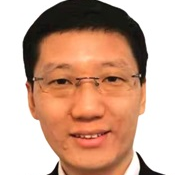Multiphysics Coupling Investigation of Turbomachinery
A special issue of Energies (ISSN 1996-1073). This special issue belongs to the section "J: Thermal Management".
Deadline for manuscript submissions: closed (30 June 2023) | Viewed by 9111
Special Issue Editors
Interests: renewable energy; multiphysics coupling investigation; turbomachinery; simulation and measurement
Special Issues, Collections and Topics in MDPI journals
Interests: hydropower; design and optimization of components in hydraulic machinery; multistage pump turbines for high-head applications; lifetime assessment
Special Issues, Collections and Topics in MDPI journals
Interests: design and optimization of components in hydraulic machinery; multistage pump-turbines for high head applications; lifetime assessment
Special Issues, Collections and Topics in MDPI journals
Special Issue Information
Dear Colleagues,
With the recent continuous improvement in theory, experimental, and numerical simulation technology, multiphysics coupling investigation of turbomachinery now combines aerodynamics, acoustic dynamics, electrodynamics, electromagnetism, fluid dynamics, gas dynamics, hydrodynamics, structural dynamics, thermodynamics, etc. This area has aroused intense research interest from enthusiastic experts and scholars, and this trend is increasing despite the complicated nature of multiphysics coupling problems.
We hereby invite you to share your original, high-quality research manuscripts, showcase your ideas and achievements of various types of turbomachinery including turbines, pumps, pump-turbines, fans, compressors, turbochargers, superchargers, engines, propellers, motors, generators, exciters, and turboexpanders.
Here is a non-exhaustive list of the suggested topics for this Special Issue:
- New physical phenomena understanding, new theories;
- Analytical, experimental, and numerical investigations;
- Advanced scientific and technical methodologies, and engineering applications, etc.;
- Multiphysics coupling investigation;
- Multiphase flows, turbulence, vortex rope, momentum, heat, and mass transfer;
- Vibro-acoustic dynamics, sound and vibration, noise control, fatigue, and damage analysis, Rotordynamics analysis;
- Application of AI, IoT, Digitalization, digital twins, cloud computing, intelligent manufacturing, 3D printing;
- Open-source code development and application for turbomachinery.
Dr. Xingxing Huang
Prof. Dr. Zhengwei Wang
Dr. Eduard Doujak
Guest Editors
Manuscript Submission Information
Manuscripts should be submitted online at www.mdpi.com by registering and logging in to this website. Once you are registered, click here to go to the submission form. Manuscripts can be submitted until the deadline. All submissions that pass pre-check are peer-reviewed. Accepted papers will be published continuously in the journal (as soon as accepted) and will be listed together on the special issue website. Research articles, review articles as well as short communications are invited. For planned papers, a title and short abstract (about 100 words) can be sent to the Editorial Office for announcement on this website.
Submitted manuscripts should not have been published previously, nor be under consideration for publication elsewhere (except conference proceedings papers). All manuscripts are thoroughly refereed through a single-blind peer-review process. A guide for authors and other relevant information for submission of manuscripts is available on the Instructions for Authors page. Energies is an international peer-reviewed open access semimonthly journal published by MDPI.
Please visit the Instructions for Authors page before submitting a manuscript. The Article Processing Charge (APC) for publication in this open access journal is 2600 CHF (Swiss Francs). Submitted papers should be well formatted and use good English. Authors may use MDPI's English editing service prior to publication or during author revisions.
Keywords
- turbomachinery
- multiphysics coupling
- experimental measurement
- numerical simulation
- industrial digitalization
- machine learning and AI
- intelligent manufacturing







